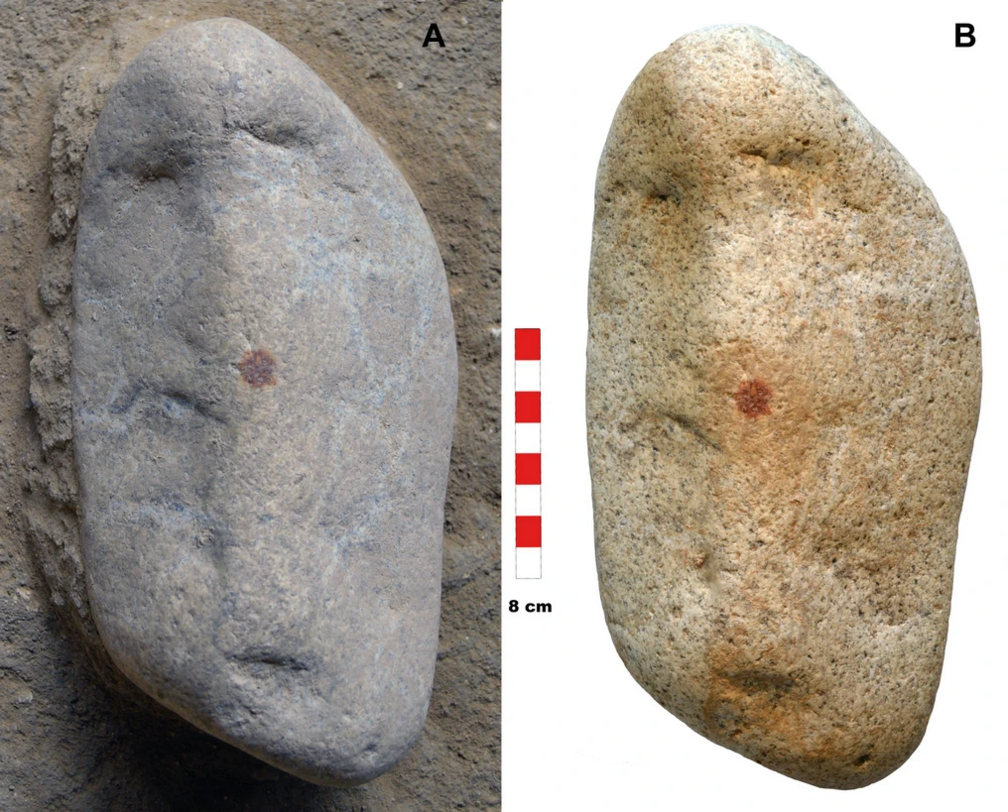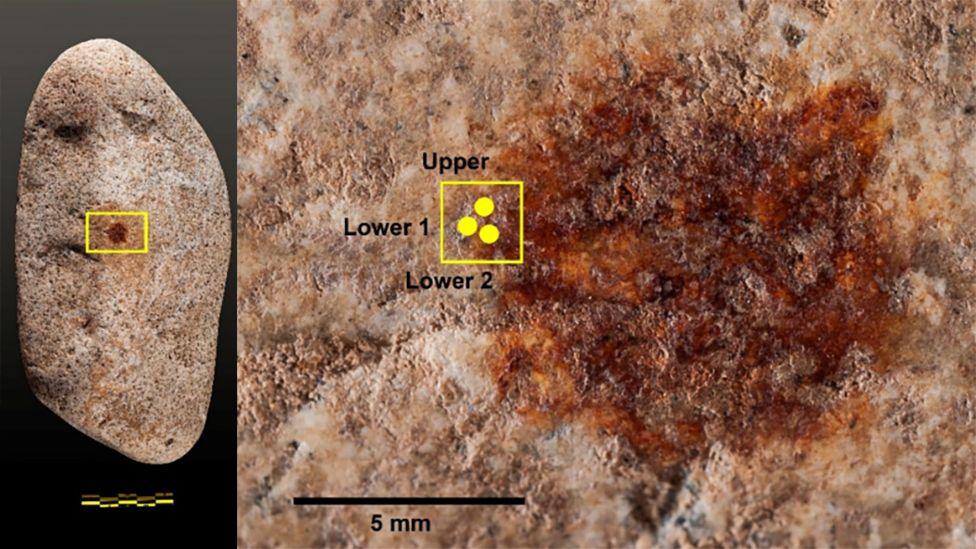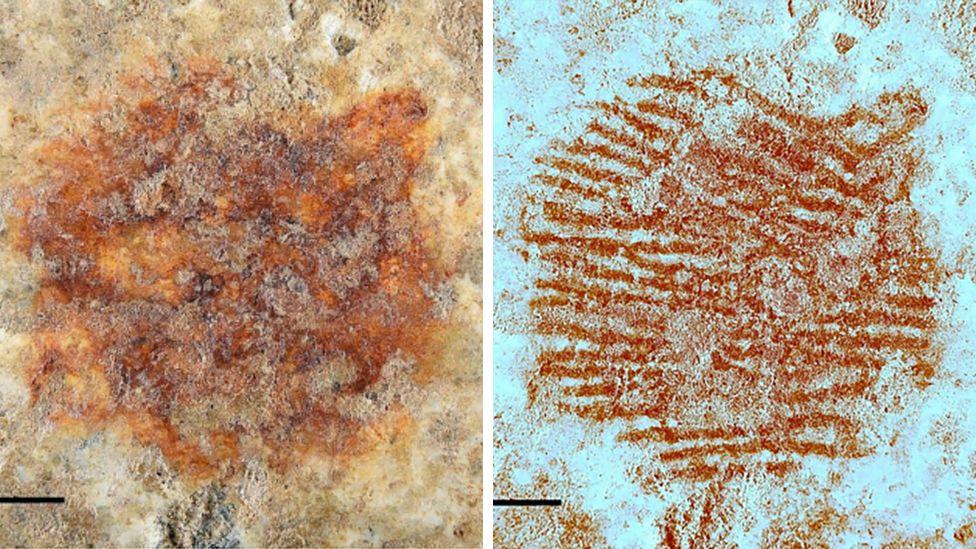Ancient human fingerprint suggests Neanderthals made art

The pebble on the left, before it was excavated, and on the right after being unearthed
- Published
Scientists in Spain say they have discovered the oldest full human fingerprint after unearthing a rock which they say resembles a human face and suggests Neanderthals could make art.
A Neanderthal man is believed to have dipped his finger in red pigment to paint a nose on a pebble around 43,000 years ago. The rock was discovered in the San Lázaro rock shelter in Segovia, Spain.
The "strategic position" of the dot has led scientists to see it as evidence of Neanderthals' "symbolic behaviour", suggesting they had the ability to think about things in an abstract way.
The findings contribute to the ongoing debate on Neanderthals' ability to make art, study co-author María de Andrés-Herrero said.

Sample zones in the red dot
In an interview with the BBC's Newsday, Prof de Andrés-Herrero from the University of Complutense in Madrid said excavation at the shelter began five years ago and in 2022 they found the stone below 1.5m (5 feet) of sediments from Neanderthal groups.
"At the beginning we couldn't believe what we were looking at, because there was a bigger stone in comparison to other stones that appeared at this site, with a red dot just in the middle which looked like a human face."
It was unclear whether the dot was made with ochre, a natural clay pigment. Once the research group was able to confirm it was a pigment, Prof de Andrés-Herrero said they contacted Spain's scientific police to support their efforts.
This team was able to conduct deep research using multi-spectrum analysis and they identified a fingerprint.
Analysis of the pebble also suggested the fingerprint was of a male adult, according to the team's investigations.
But archaeologist David Álvarez Alonso, the study's co-author, said that as there were no other Neanderthal references to compare the prints to, it was difficult to say for certain.
Speaking from a news conference updating the public on the scientific development, Spanish official Gonzalo Santonja said the pebble was the oldest portable object to be painted in the European continent and "the only object of portable art painted by Neanderthals".

Multi-spectrum analysis led to the identification of a fingerprint from the red dot
Prof de Andrés-Herrero said her research group's findings mark "an important contribution to the debate on Neanderthals' symbolic capacity, because it represents the first known pigment-marked object in an archaeological context" and it is "clear it is a Neanderthal site".
In addition to this, the human fingerprint was found in a non-utilitarian context, the expert added, suggesting that the dot on the pebble was intended for artistic purposes.
Prof Herrero also said it is the first time scientists have discovered a stone in an archaeological context with a red ochre dot, meaning Neanderthals brought it to the shelter.
The thinking is that one of the Neanderthals found the stone, "which caught his attention because of its fissures, and he intentionally made his mark with an ochre [pigment] stain in the middle of the object," Prof Alonso said, quoted by Spanish news agency Europa Press.
Researchers believe the mark was not accidental because, according to their findings, the red pigment does not exist naturally in the shelter, meaning it was "intentionally brought to the shelter".
In their paper, which was published in the journal Archaeological and Anthropological Sciences, external, researchers wrote: "The pebble from San Lázaro rock-shelter presents a series of characteristics that render it exceptional, based on which we have deemed it a visual symbol that could be considered a piece of portable art in some contexts."
Related topics
- Published2 May 2024
